I am reposting this blog post from 2013, because it is *that* time of the school year where you are getting ready to implement your reading workshop mini-lessons. This is THE most important time to teach the expectations for reading workshop- you set the foundation for a successful year of reading workshop NOW! I hope you are enjoying the rest of your summer!
****************************************************************************
Post originally posted on Saturday, January 19, 2013
It’s that time of the school year when our students are falling nicely into our routines that we practiced over and over at the beginning of the year. I have a very *challenging* group of third graders this year. After 13 years of teaching, I do not say that lightly. However, with mini-lesson after mini-lesson about expected behaviors of good readers…we are up to independent reading for 40-45 minutes! The best part is that they are engaged in their reading and really taking ownership with the workshop approach to reading.
At the beginning of the school year, I established the routine of reading workshop by teaching daily mini-lessons about the structure and management of reading workshop. Here is a peek at some of the mini-lessons!
During the first week of our mini-lessons, we signed our official reading workshop contract, in which we agreed to a set of expectations that would support our mission to become better readers.

Students organized over 2,000 books into an organized leveling system which they agreed on. In past years, I would have my classroom library all organized into baskets and bins, before they even arrived on the first day of school! However, I quickly learned the benefits of having my students taking an active role in helping to establish a system for organizing books for our classroom library!
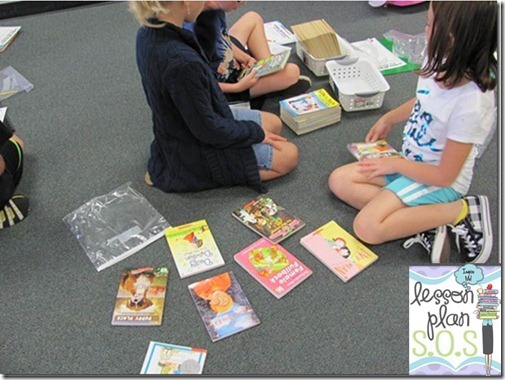
My students agreed that it made sense to put the Junie B. Jones books in the same book baskets. 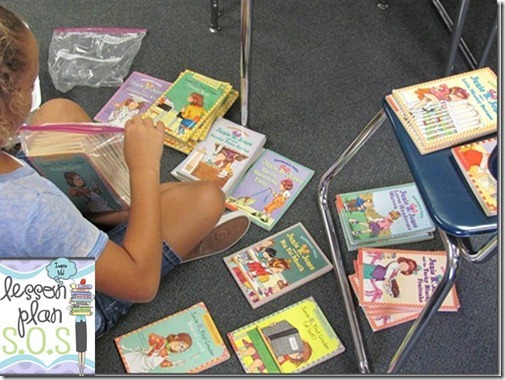
This group of students worked together to organize all the Magic Tree House books into the same book baskets.
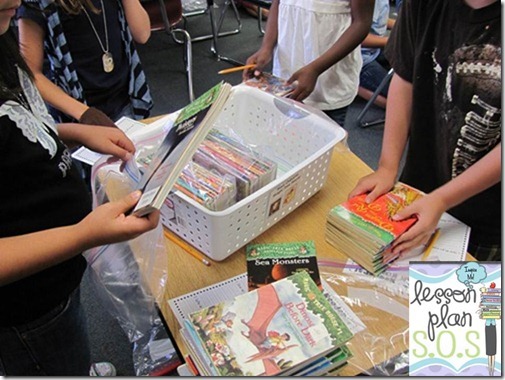
Once our classroom library nice and organized, I taught my students how to shop for a just- right book. Students are assigned one shopping day a week learned how to shop for a just right book to read during their independent reading time. (Students who are reading shorter picture books have two days a week to go shopping.)
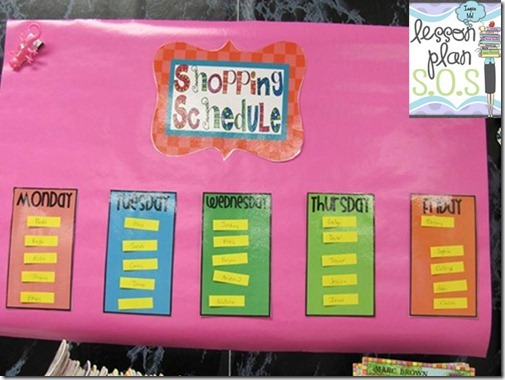
Since the students were the ones to help set up the classroom library, they know exactly where all books are!
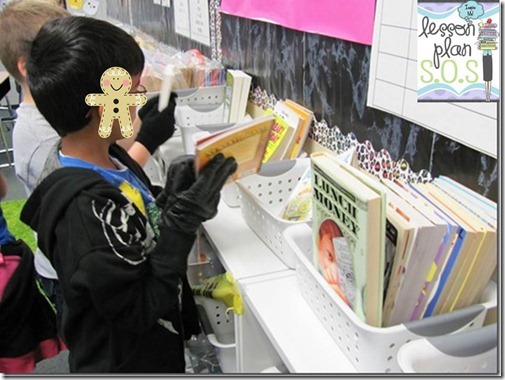
The students REALLY enjoyed taking our their markers, crayons, and scrapbooking supplies to create their book nooks- where they keep their just-right books!
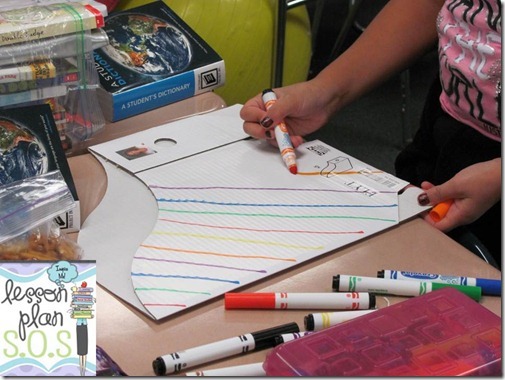
And, yes!, the big mature “too cool” third grade boys like this JUST as much as the girls! ![]()
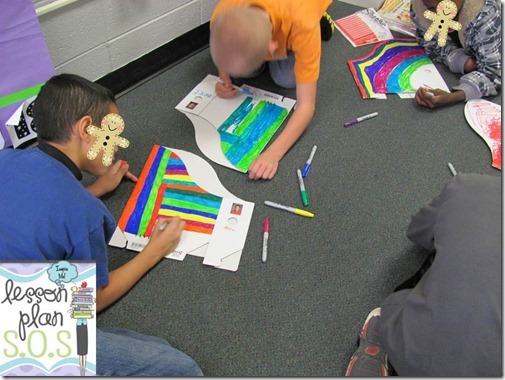
As for our Reader’s Notebooks, the black and white covers for the composition notebooks did not do much for the students. Instead, glitter, stickers, pictures and anything with a sparkle was glued down for a new and improved, personalized!, reader’s notebook. Side note: This little girl had a can of play doh…not really sure how she was thinking of using that, but an A+ for creativity! ![]()
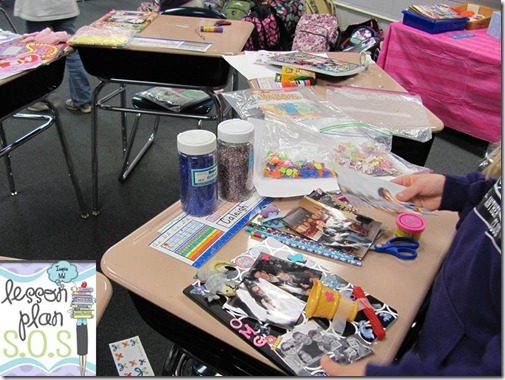

Although these activities seem more like fun than practical RW lessons, it does set the stage for the students really taking ownership over their reading time. Just as important, it really gets them **OVER THE TOP EXCITED** for RW!!!
Our principal even got in on the action! We wrote a letter requesting his presence at our grand opening of our classroom library!
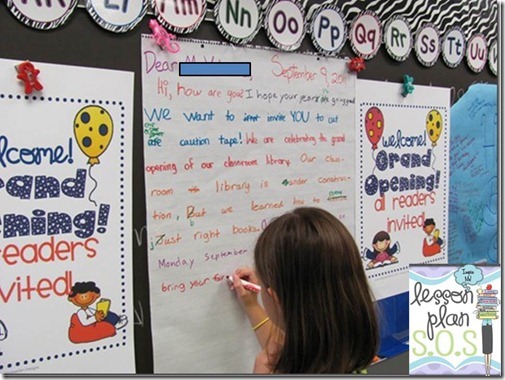
He assisted but cutting the caution tape off of our bookshelves at the ribbon cutting ceremony! By the way…did you notice that he is wearing his “just right” reading gloves?? (Keep on reading!)
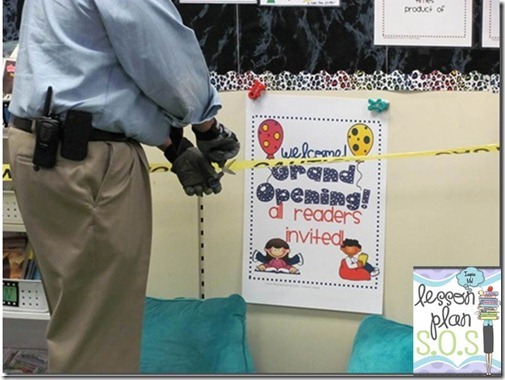
Students found some books that “fit like a glove”- literally- that they could not wait to get their gloves on!
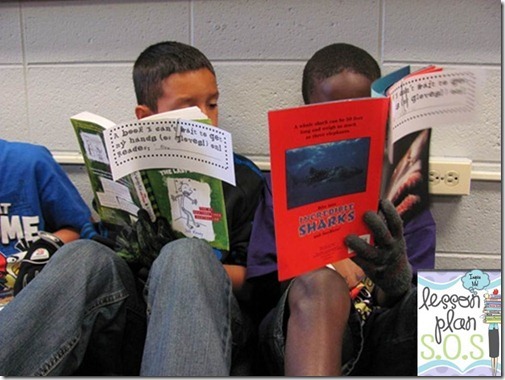

For a few of our mini-lessons at the beginning of the year, students brought in a pair of gloves that fit them “just right” and compared that to a book that fit them “just right!”
We then wore our gloves during RW, to remind us to shop for just right books, which help us become a better reader.
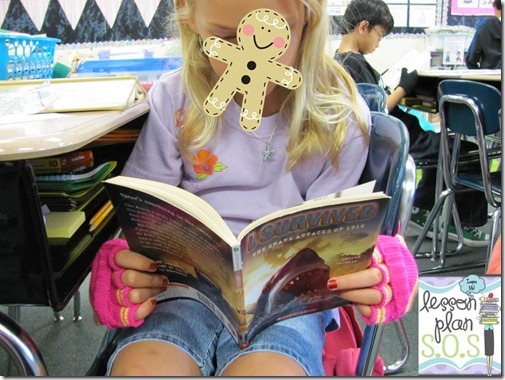
We started reading partnerships and practiced our reading fluency by reading with a just right reading partner!
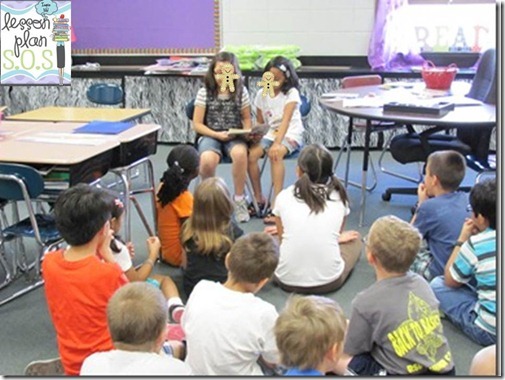

We then dove right into our comprehension based mini-lessons! Students learned that their schema is like a sticky note and the information and experiences literally sticks to their brain! Is it not hysterical how this little girl to the left has her schema sticky notes stuck on with her headband and barrettes??? ![]()
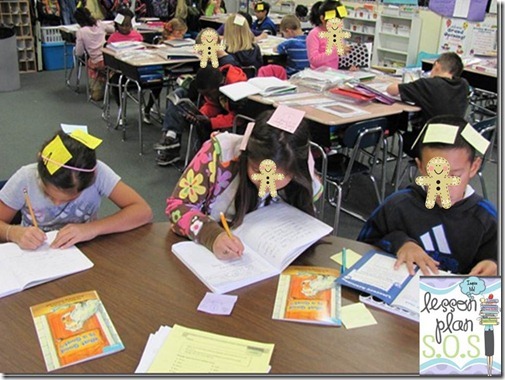
We even had a few reading celebrations!! Our most popular to date was when we **literally!** dressed up like rock stars because of our new rockin’ reader status!
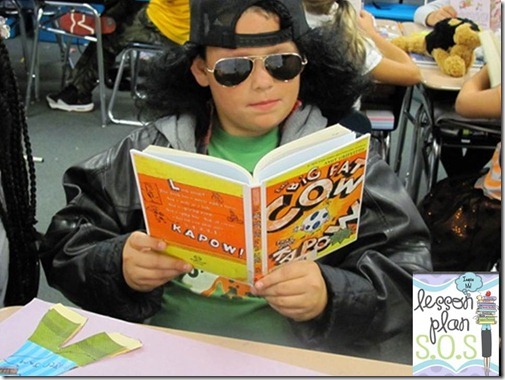
Like I said, the boys really do get into this!!!
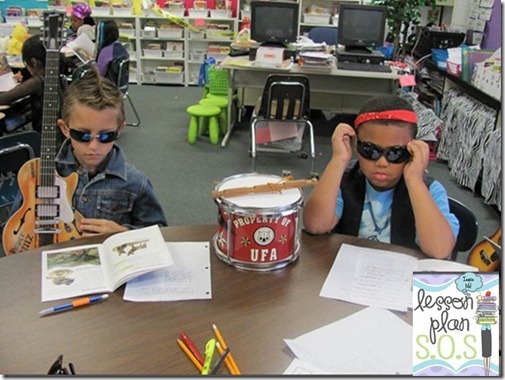
I mean, come on?? Need I say more?
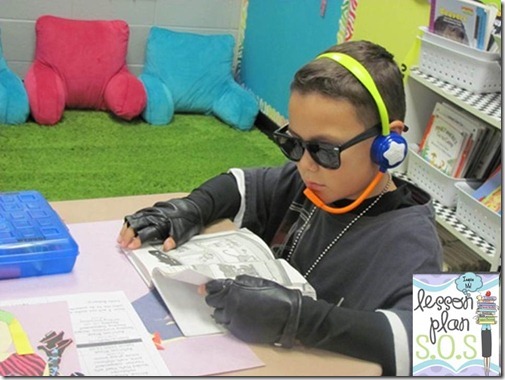
ALLLL of these rockin’ minilessons have led us to where we are right now in the year….reading independently for 45 minutes while I am working with small groups! (No centers in sight!!!!)
Ready to learn more about how we use a reading workshop approach to teach reading comprehension and skills?? We have a lot of readers ask us the same questions after reading our first post about rockin’ reading workshop and we hope that we can answer them here!
One of my first steps in planning a new unit for reading workshop, is to find a mentor text!

A mentor text is a book that I read from start to finish at the beginning of the unit. It is a book that I will return to over and over again throughout the month when teaching strategies and skills during my mini-lesson.
When a reader asked us about the possibility of developing a character traits lesson with a gingerbread theme, similar to our Little Old Lady lesson, that was all the inspiration we needed!!! We searched for the perfect gingerbread picture book and found it:

Oh my!! This is an absolutely adorable book and is written beautifully. I was not surprised when I read that the author, Laura Murray, was a former elementary teacher!!! Another reason why I chose this book is because kindergarten and first grade students should not have all the fun with gingerbread…right??? I love teaching with a theme, but it sometimes is a bit more challenging to make it more appropriate for my third graders. This book fit the bill!
Once I have the mentor text selected, I then plan the mini-lessons that I would like to teach throughout that unit of study. How do you select the mini-lesson? That is one question that our readers frequently ask us and is great question…with no easy answer! First and foremost, your mini-lesson will depend on the needs of your students and the common core standards and/or district guidelines. You can then conference with your students to determine their skill of deficit, or what they need more explicit teaching on.
Once you have an idea about the mini-lessons you are going to teach, you are ready to start teaching your new unit! In the rest of the post, I will highlight a few different lessons that I taught during reading workshop. These lessons are taken from our new unit, Rockin’ Reading Workshop: Gingerbread Style!
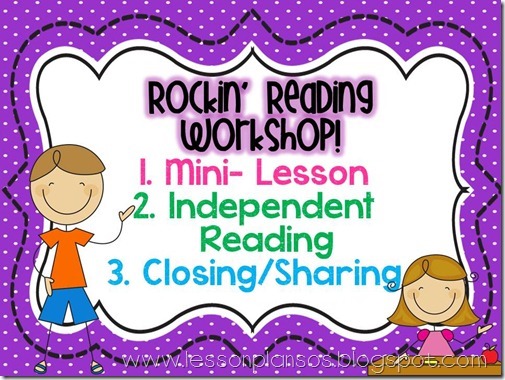
Mini- Lesson # 1: Good readers use their schema (prior knowledge) as they read. Schema is all the experiences that the reader has, which makes up who they are, what they know, and what they believe. What is your schema about gingerbread?
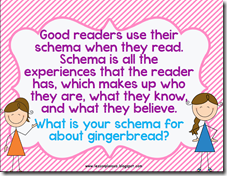
Prior to even reading the book, students write about their schema for gingerbread (any and all prior experiences about the topic!). I teach my students about the importance of using our schema and use the anchor charts to guide my mini-lesson instruction.
As student begin their independent reading, they first write and reflect their schema on the paper that I passed out during the mini-lesson. The students write or draw whatever comes to their mind. When they are complete, they know to start their independent reading.
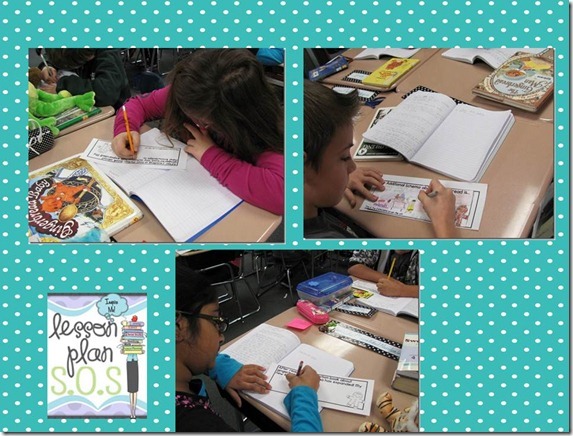
As students are reading independently and writing about their schema, I am working with small groups at the guided reading table.
Closing: To conclude this mini-lesson, the students share their “brain file” for gingerbread with their reading partner. Each child then adds their schema strip to our class brain file. ![]()
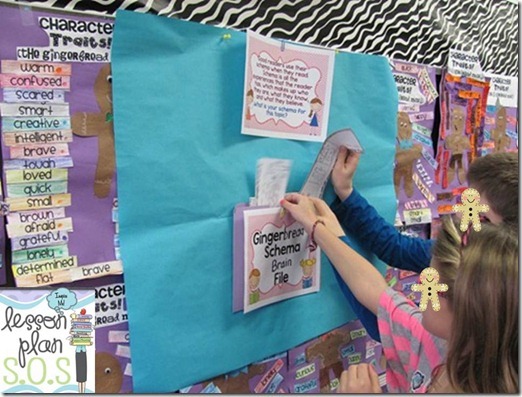
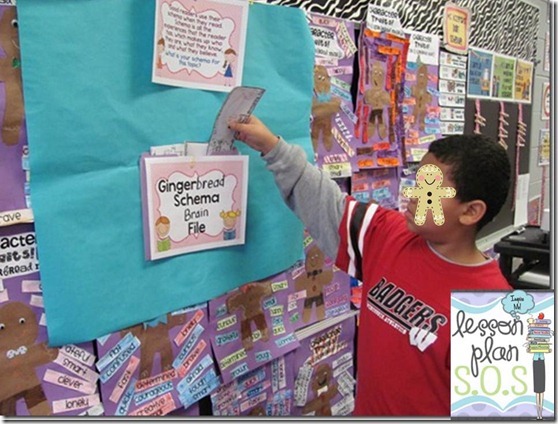
My mini-lesson for the next day is to simply read the text!! I explain that The Gingerbread Man Loose in the School will be our next mentor text that we will be referring back to over and over again.
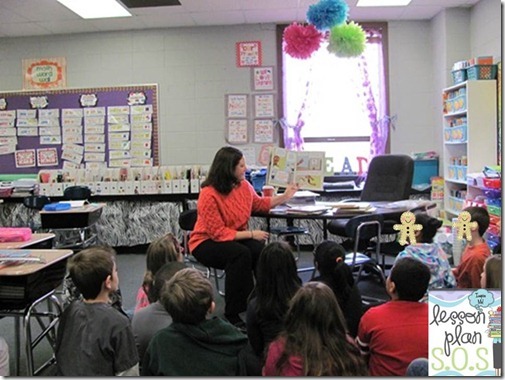
After the read aloud, the students then begin their independent reading. By this point in the school year, the students know that the expectation is to always write about what they are thinking as they are reading. (They use their reader’s notebooks as mentioned earlier!)
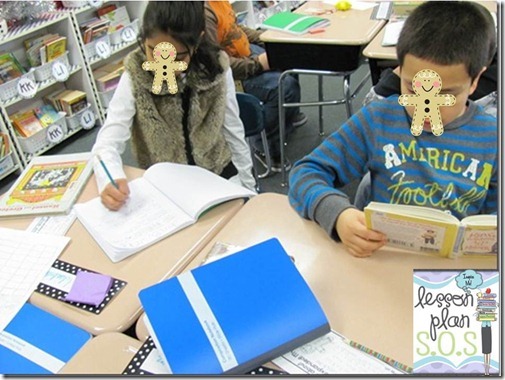
As the students are working independently (again, not in centers!!), I am meeting with students for small group instruction.

Closing: For the closing of reading workshop, we gather back together on the carpet. Students turn to talk to their reading partner and share what they did during their independent reading time (and/or during our small group instruction.)

Students always bring their reader’s notebooks and the book they were reading to closing. In doing so, it teaches them to always refer back to the text when they are sharing their ideas. (It also helps keep them focused and on task!)
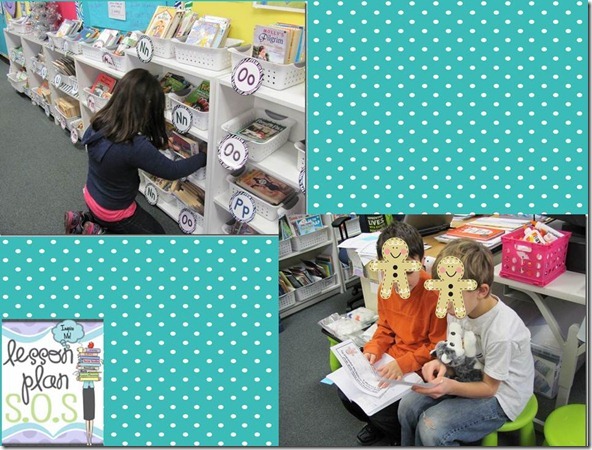
In one of my mini-lessons, I taught the students that good readers expand their schema about gingerbread by reading more books about that topic. In fact, I even read a few recipes about how to decorate/make a gingerbread house. This taught the students that their brain file expands as they learn new information.
After I taught that mini-lesson, many students wanted to REALLY expand that brain file of theirs and read some different versions of the gingerbread story that I checked out from the library. (A comparison chart of all the different versions for the gingerbread man was another mini-lesson.) The picture below shows the little girl adding her additional information (schema) to our brain file, which she did at the closing of reading workshop.

Mini-Lesson #2: Good readers create thick questions about the gingerbread boy. I use my anchor chart (below) to teach my students what thick questions are.
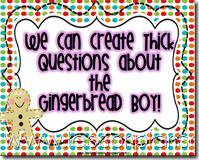
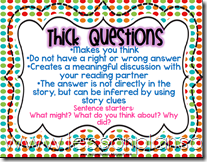
Again, I refer back to the text and reread a few pages aloud. I explicitly share my thinking and questions aloud and record them on the anchor chart.

After listening to my questions, the students turn and talk with their reading partner and use the sentence starters from the anchor chart to create their own thick question about the mentor text.
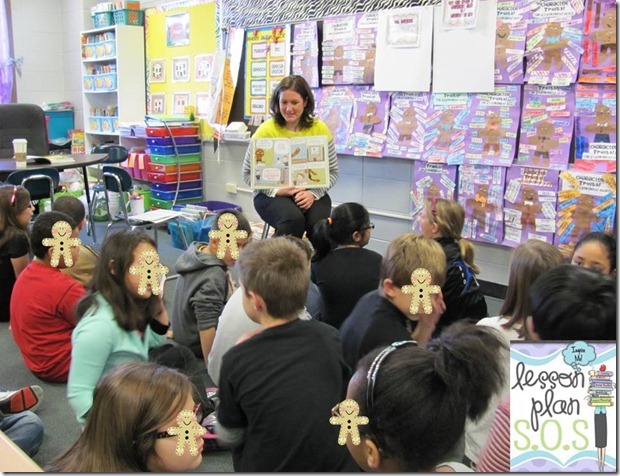
I wrap up the mini-lesson by writing a few more questions on our anchor chart. One student writes their question on the anchor chart as well.
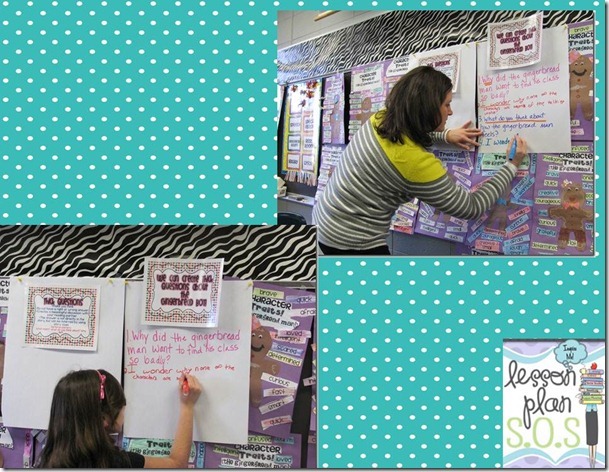
Independent Reading Time: I remind students their focus during their independent reading time: good readers ask questions while they are reading and refer back to the anchor chart. During the 45 minutes of independent reading, they students record their questions. Since I want the focus to be on reading (versus writing the whole time) I “challenge” my students to write one really good thick question as they are reading.
Again, while students are independent reading, I meet with students in flexible groups for strategy instruction or guided reading instruction. For this particular guided reading group, I introduced a new text, “Wildfires.” We worked to write thick questions before and during reading the text, all while using the anchor chart that we created during the mini-lesson for guidance.
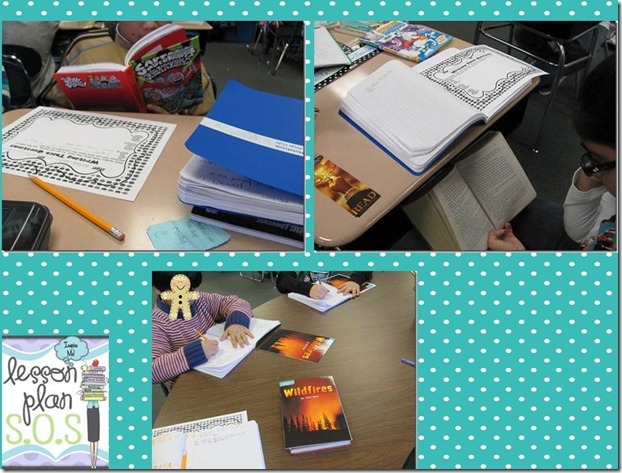
Closing: Students gather back on the carpet as a class. I review what we learned today as part of our mini-lesson. I then ask the students to meet with their reading partner to share what they learned today and also share what they wrote for their thick question. Students read what they wrote down in their reader’s notebook, reflect on the lesson, and discuss the book.
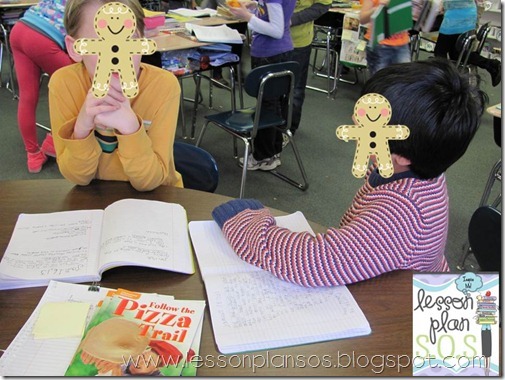
**This next mini-lesson is taken directly from my new unit. ![]()
1.Make a connection!
Teacher Talk: Last week we learned how good readers use their schema when they are reading. We used what we already knew about gingerbread to help us understand new information.
2.Teaching point/Explicit instruction!
Teacher Talk: Today I am going to teach you how good readers keep track of the story events as they read. Good readers can sequence events using a flowchart to show what happened at the beginning, middle, and end of the story. Sequence is the order of events in a story. We will use our mentor text, Gingerbread Loose in the School, to identify the story sequence. Good readers use transition words, such as first, next, then, to tell the events of the story in the correct order.
(Below is an example of the mini-lesson that is outlined in this unit.)
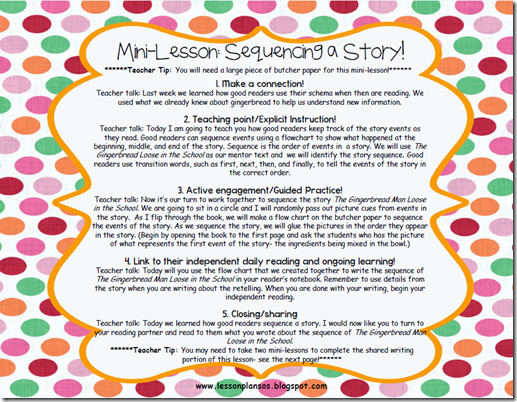
3.Active engagement/Guided Practice!
Teacher talk: Now it’s our turn to work together to sequence the story The Gingerbread Man Loose in the School. We are going to sit in a circle and I will randomly pass out picture cues from events in the story. As I flip through the book, we will make a flow chart on the butcher paper to sequence the events of the story. As we sequence the story, we will glue the pictures in the order they appear in the story.
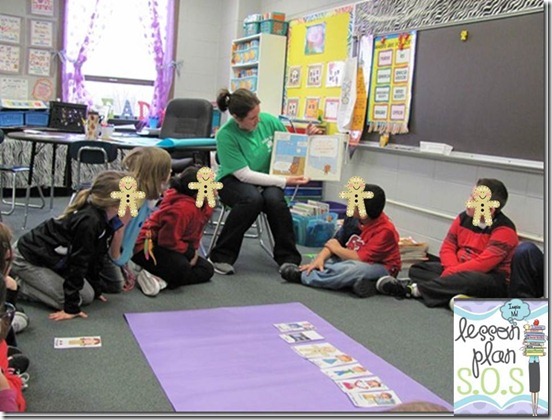
I then begin by opening the book to the first page and ask the students who has the picture of what represents the first event of the story- the ingredients being mixed in a bowl.

As I flipped through the pages of the text, the students sequenced the story using the pictures. I made sure to remind my students to use transition words and details from the text to support their idea.
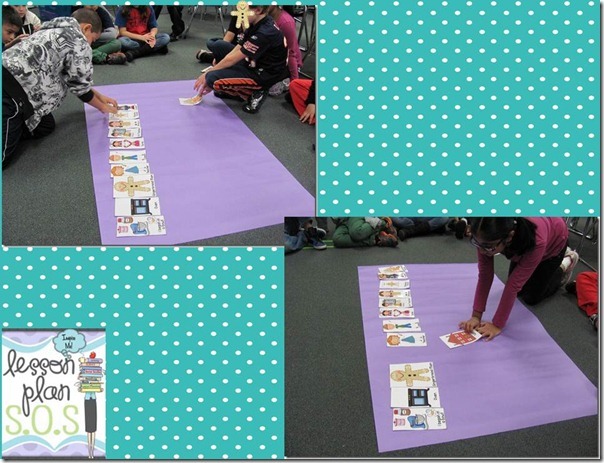
4. Link to their independent daily reading and ongoing learning!
Teacher talk: Today will you use the flow chart that we created together to write the sequence of The Gingerbread Man Loose in the School in your reader’s notebook. For today, I just want you to write the first sentence that represents what happened first in the story. (It all begin with the ingredients mixed into a bowl!) Remember to use details from the story when you are writing about the retelling. When you are done with your writing, begin your independent reading.
(The picture below shows how we revisited this mini-lesson the next day to write the sequence of the story.)
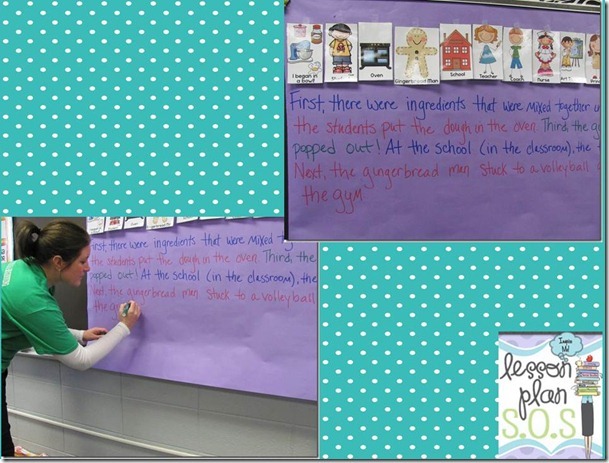
5. Closing/sharing
Teacher talk: Today we learned how good readers sequence a story. I asked you to write the first sentence for the sequence of the story. I would now like you to turn to your reading partner and read to them what you wrote about the sequence of The Gingerbread Man Loose in the School.
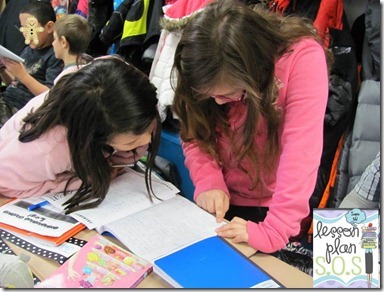
Some other mini-lesson with this unit included:
Working with our reading partner to rewrite a new ending to the story!

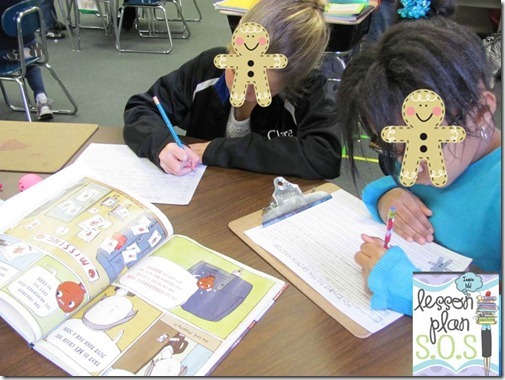
And learning about first person and third person point of view.
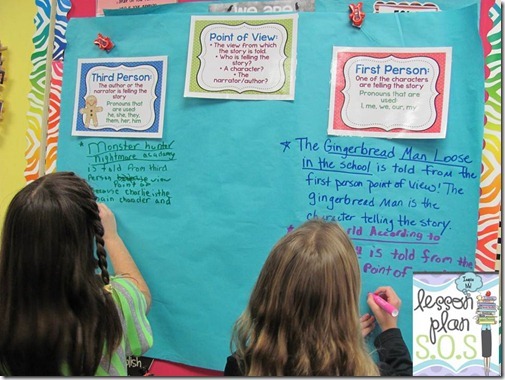
All of our anchor charts are then placed onto our Reading Workshop BB, until we begin our next unit and start all over again! ![]()

We ended this unit of study with a cute art project! After a few mini-lessons about character traits, my students created an adorable gingerbread man.
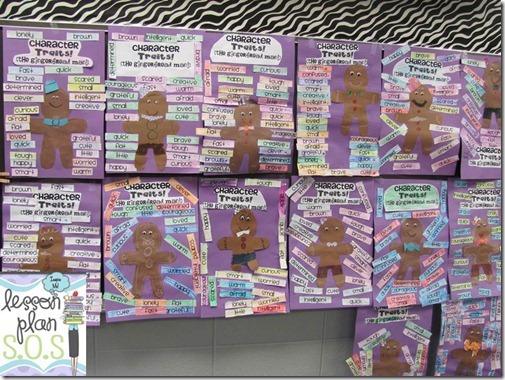
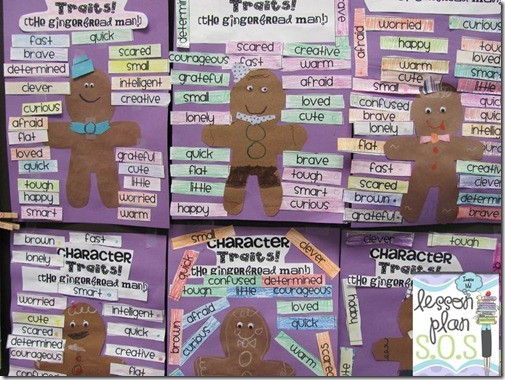
Are you ready to rock reading workshop- Gingerbread Style?
File description:
Do you already have reading workshop up and running in your classroom? Do you have a classroom full of rockin’ readers that are ready to have their reading workshop kicked up a notch…gingerbread style???
If so, this is the unit for you! Grab a copy of The Gingerbread Man Loose in the School, by Laura Murray. This beautiful picture book will serve as the mentor text for this RW unit of study. There are 20 comprehension based mini-lessons that are included in this file. All mini-lessons are written in the reading workshop daily lesson plan template, which will explicitly outline what the teacher is saying. This file will teach you how to set up your mini-lessons and help you keep your reading workshop mini-lessons truly “mini,” which can be challenging to do!
There is an abundance of colorful anchor charts, which will provide you with a powerful way to support what you are teaching during your mini-lessons.
The mini-lessons in this unit are aligned with ELA common core standards, for grades 1-5. (The standards that apply for this unit is listed by grade level in the file!)
If so, click on this link below to visit my Teachers Pay Teachers page to purchase.
Save 10% by purchasing directly from my website.
How is reading workshop going for you? We would love to hear about how your students are rockin’ your RW mini-lessons!!

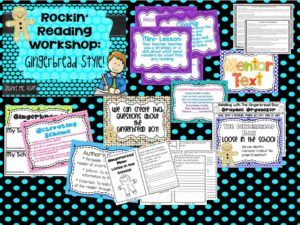




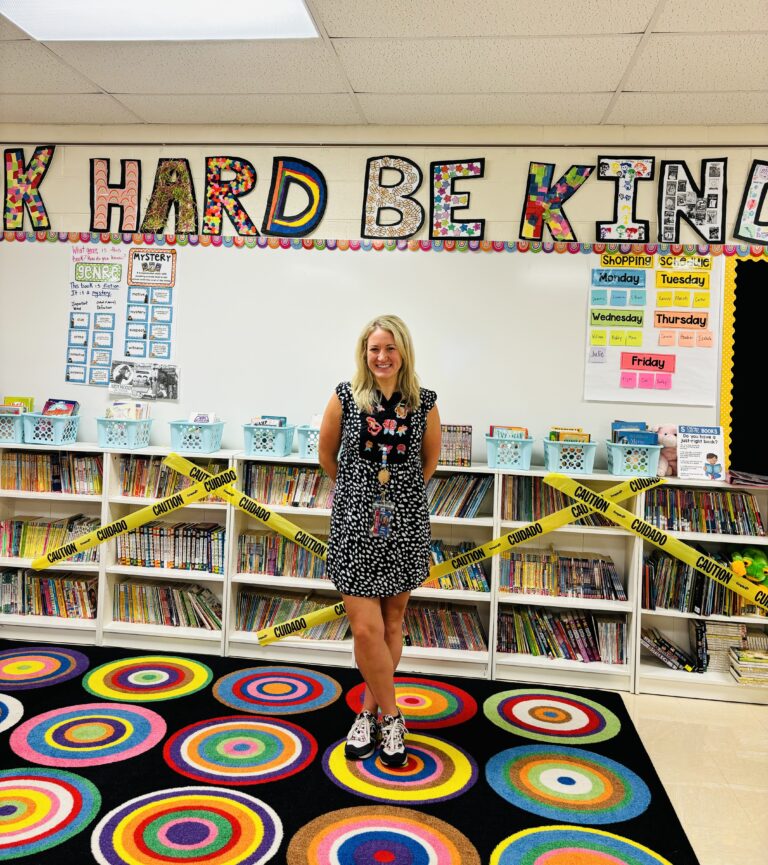



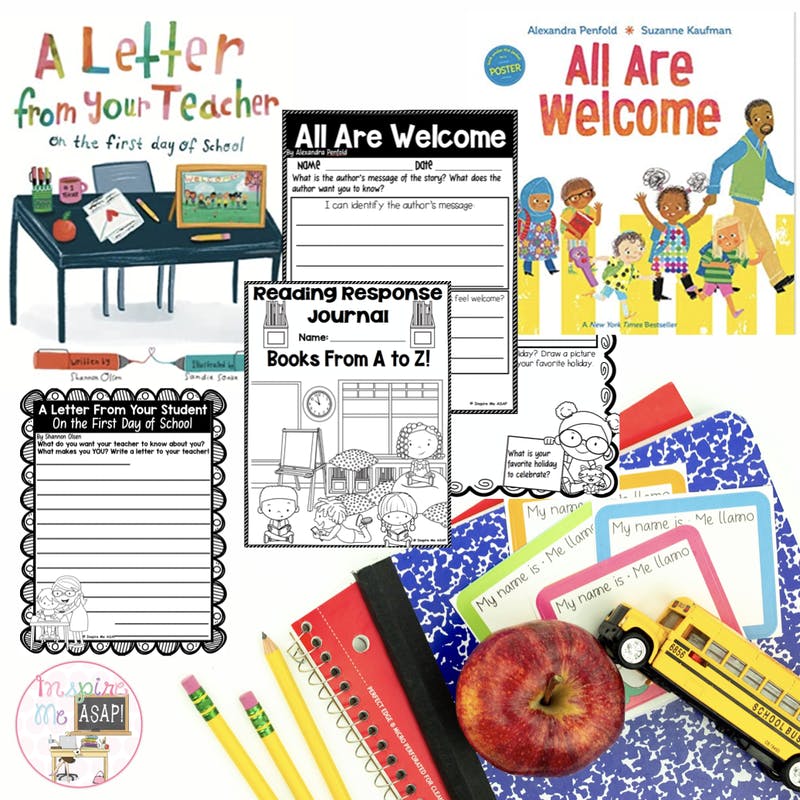
6 Responses
Last September I purchased the Guided Reading packet – the one for $22. I was wondering if there is a big difference between your guided reading vs. reading workshop approaches?
thank you,
susan k.
Wow…This is what i have been looking for and you have done a great job. Beautiful cards.
Thank you
scrapbooking supplies
This comment has been removed by the author.
What an awesome idea to have the students chose how the books were going to be organized in the library…as a first year teacher without very many books…would you still suggest doing something like that?
I have bought both units and they have been an amazing introduction to reader's workshop for me:) Are you going to write a character unit?
It's amazing.